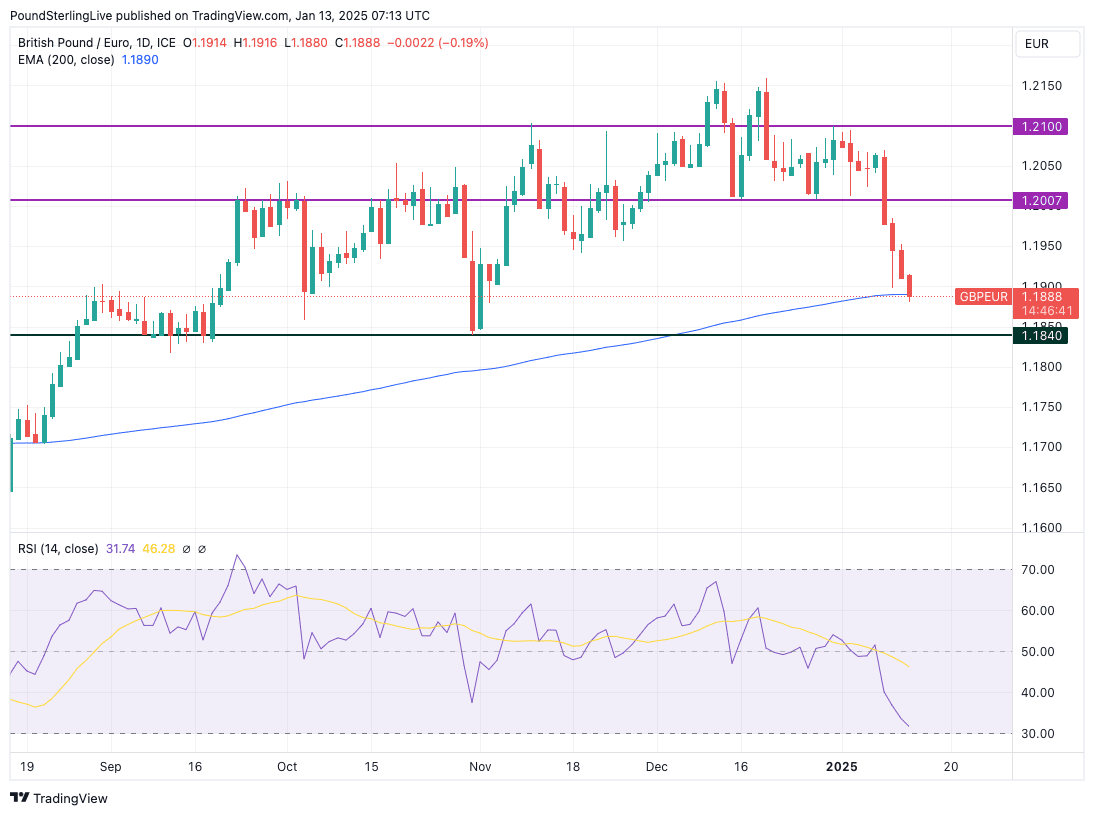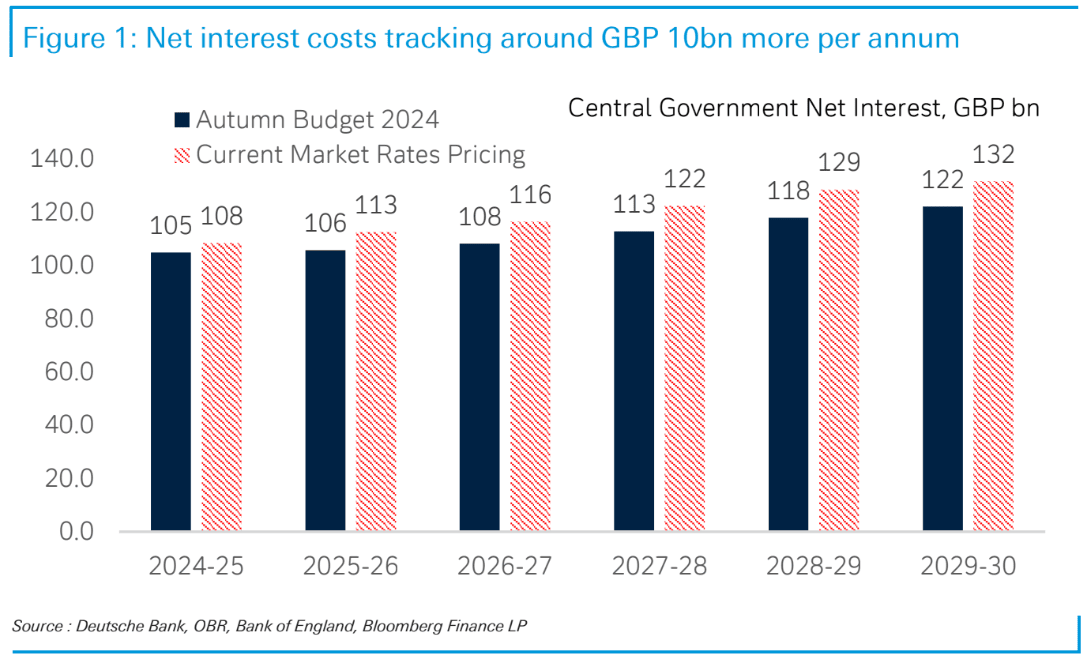Pound to Euro Forecast: Oversold, But Still Favouring Downside
- Written by: Gary Howes

Chancellor Rachel Reeves returns from China, and investors will be waiting on any policy announcements. Picture by Brompton, shared and licensed to Gov.UK.
Pound Sterling selling resumes on Monday amidst a significant shift in confidence towards the UK at the start of 2025.
The Pound to Euro exchange rate (GBP/EUR) is 0.20% lower on the day at 1.1885 following another selloff focussed on the UK currency in the Asian trading session.
Having broken the 50- and 100-day exponential moving averages, GBP/EUR has entered a downtrend and the outlook now advocates for further weakness with the downside target being the graphical support line located at 1.1840.
GBP/EUR is now testing the 200-day exponential moving average (EMA), which could mean it finds some support in the near-term.
In fact, the test coincides with the Relative Strength Index (in the lower panel), reaching 30, which signals the exchange rate is now technically oversold, and a pullback or consolidation is needed to remedy the situation.
Also, GBP/EUR has diverged quite notably from the nine-day EMA, and we would like to see it close the gap.
Compare Currency Exchange Rates
Find out how much you could save on your international transfer
Estimated saving compared to high street banks:
£25.00
Free • No obligation • Takes 2 minutes
This speaks of building potential for a near-term recovery.
However, we think any recovery would be limited in duration and scope, and a return to the levels seen at the start of the year is unlikely.
Any short-term recovery would only delay the test of 1.1840, which remains our preferred base-case stance heading into the coming week.
The fundamental picture continues to speak of the pressures facing the Brtish Pound and UK gilts, which sold off significantly last week as investors grow increasingly concerned about the UK's debt dynamics.

By selling UK debt (gilts), markets give the verdict that the new government of Keir Starmer has compromised economic growth while adding to the UK's debt burden.
The coming week will see markets pay close attention to the UK's gilt yields, and any significant increases will hint at ongoing concerns.
UK inflation numbers are due for release on Wednesday, where it is anticipated a 2.6% year-on-year increase will be announced.
This will confirm the UK's inflation rate is rising and is on course to hit 3.0% in the coming months, which gives the Bank of England limited ability to step in and boost the economy via a series of interest rate cuts.
Above: Rising debt costs mean billions must be found just to pay off debt.
With unemployment rising and the economy slowing, some members of the Bank's Monetary Policy Committee would like to cut interest rates to offer support. However, the Bank's mandate is clear: to bring inflation back to 2.0%. There is a real risk that cutting rates as inflation is rising will undermine the Bank's credibility and encourage inflation expectations to rise.
This means the central bank is unlikely to step in to provide support, leaving Prime Minister Keir Starmer and Chancellor Rachel Reeves to announce the decisions and policy changes that the market needs to see to become more confident about the UK outlook.
A sell-off in UK debt (gilts) accelerated last week, pushing up the cost of government borrowing to multi-decade highs. Economists think the government will need to spend an additional £10BN in the coming year just to service the UK's debt, which means Chancellor Reeves has no more fiscal headroom remaining as she heads into the April spending review.
She must cut spending or raise taxes again.
Economists are nervous that she will launch another tax raid, which would hamper the economy, as she did in October when she announced billions of pounds in taxes on businesses.
The problem for Reeves is that her budget is committed to raising both taxes and borrowing, but on the promise her measures would boost economic growth in 2025. This is important, as that growth would pay for the additional borrowing.
The post-budget data is starting to come in, and what investors are seeing makes them uncomfortable: business confidence has plummeted, unemployment is rising and growth has flat-lined.
This has led the market to demand a premium on UK bonds, which has soured sentiment towards the Pound, which is the worst-performing major currency in the G10 for 2025.
UK monthly GDP growth for November will be released on Thursday, where we will need to see a positive upside surprise if the narrative is to shift in favour of the Pound.
We have had two successive -0.1% readings for September and October, and investors will want to see growth return.
Sentiment has turned against the Pound, and it will take a number of economic data releases and policy announcements to shore confidence and return it to winning ways.






